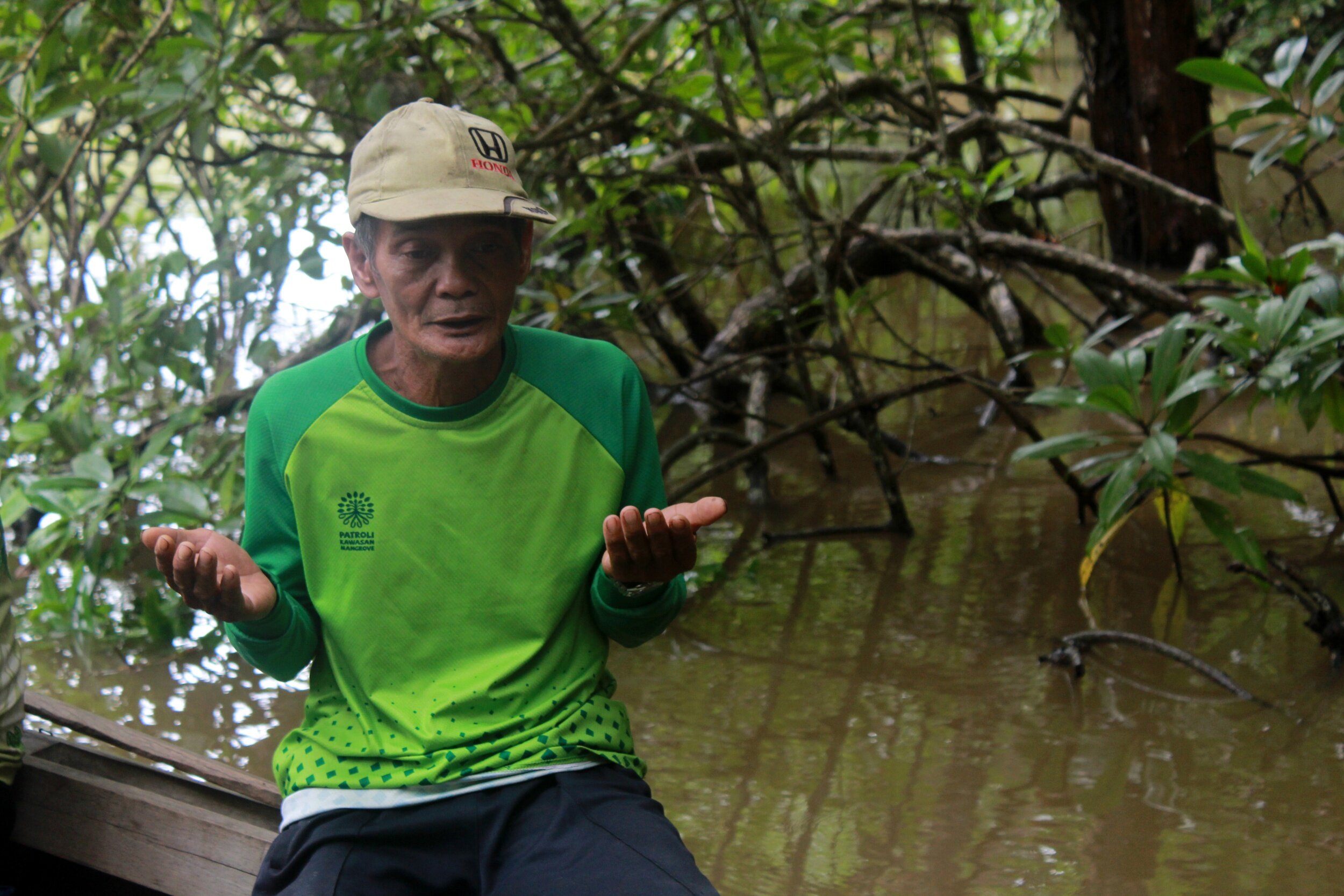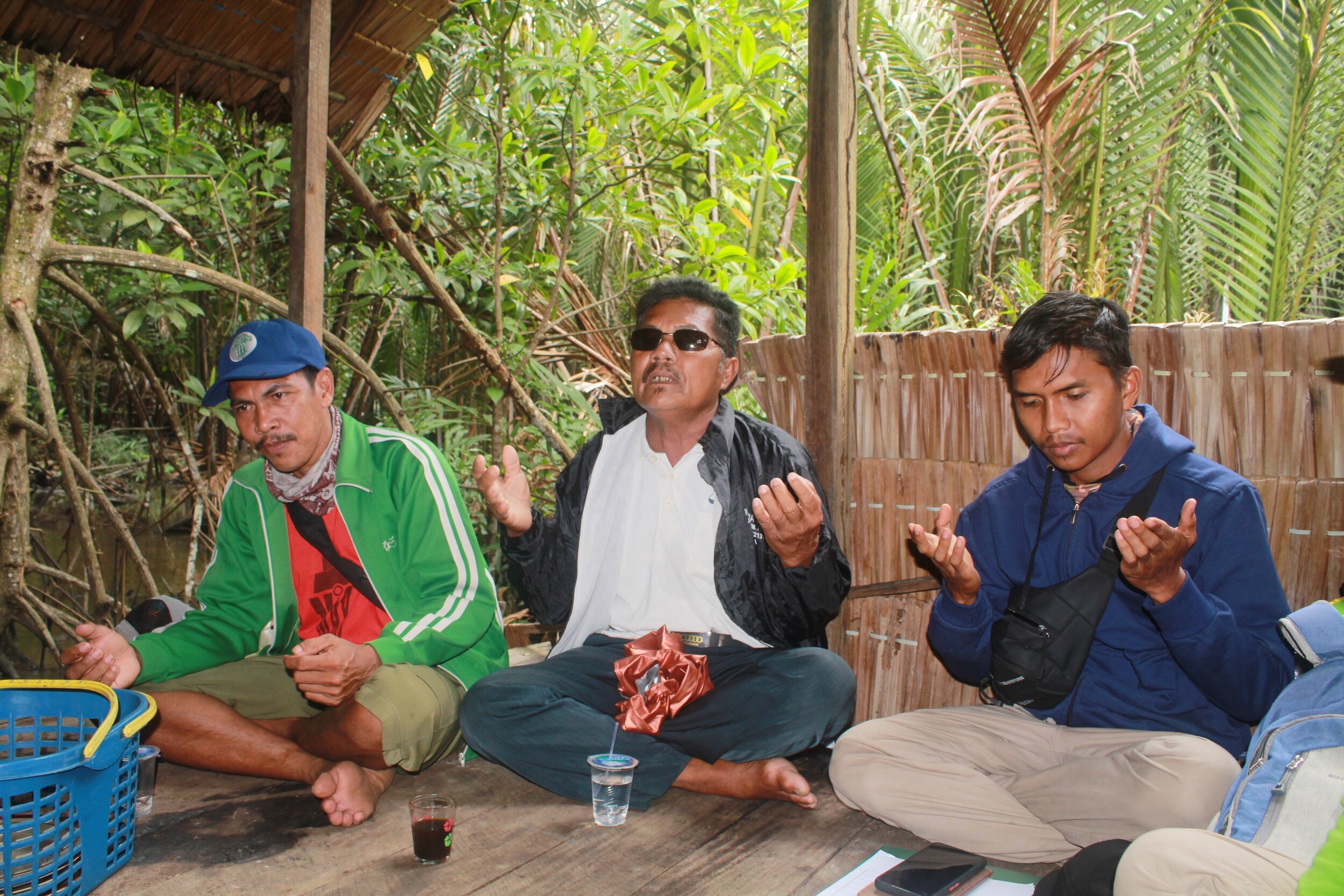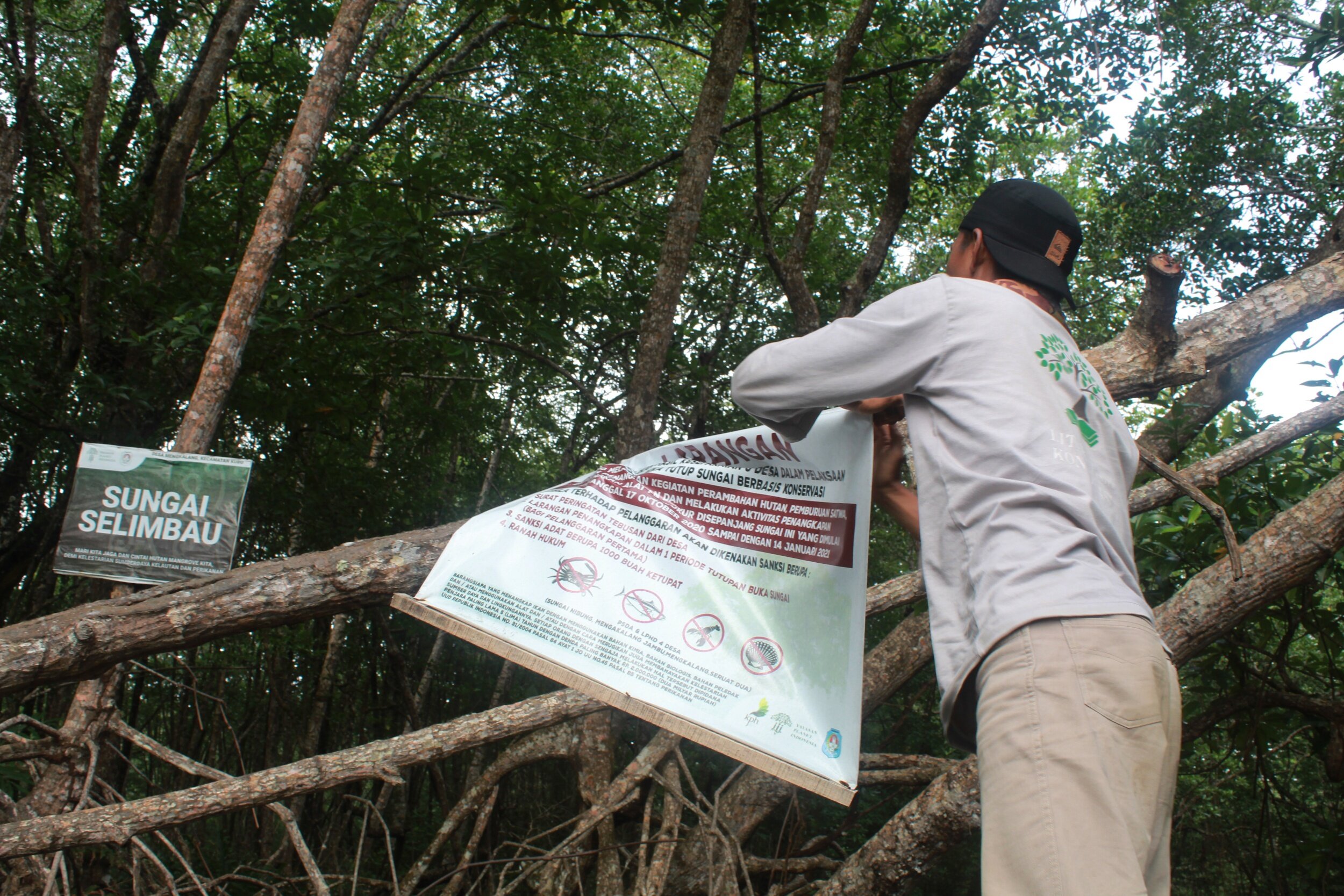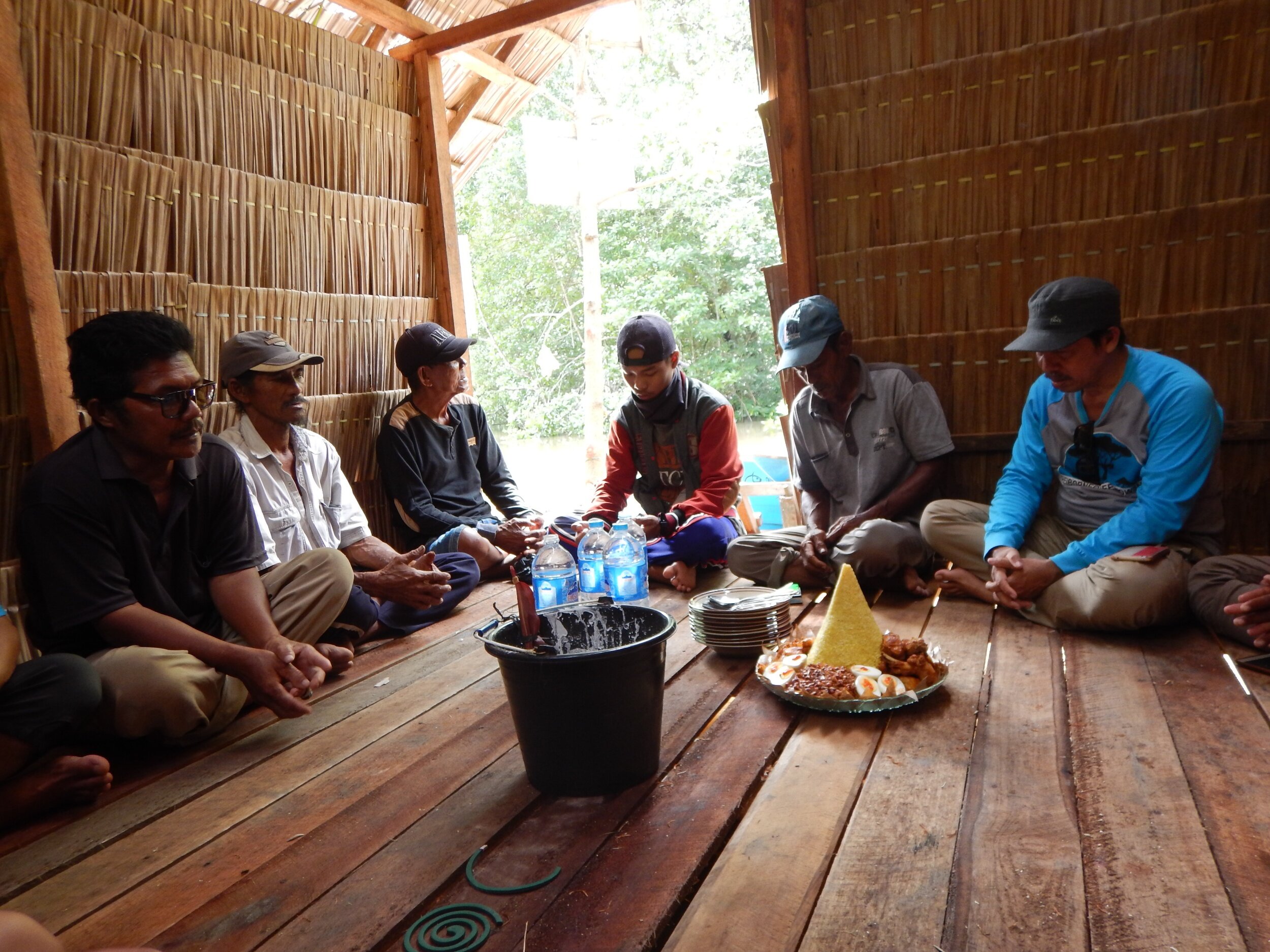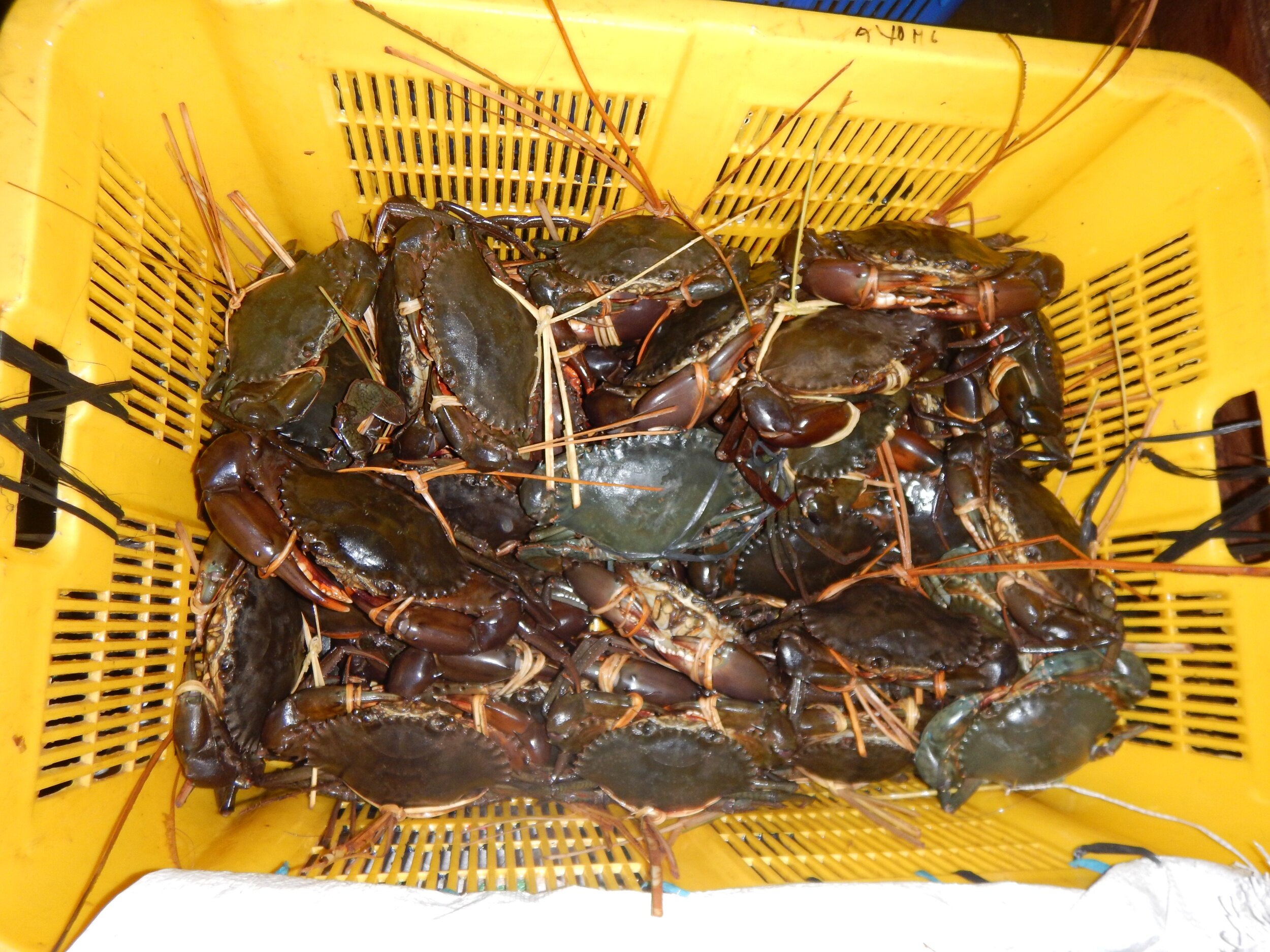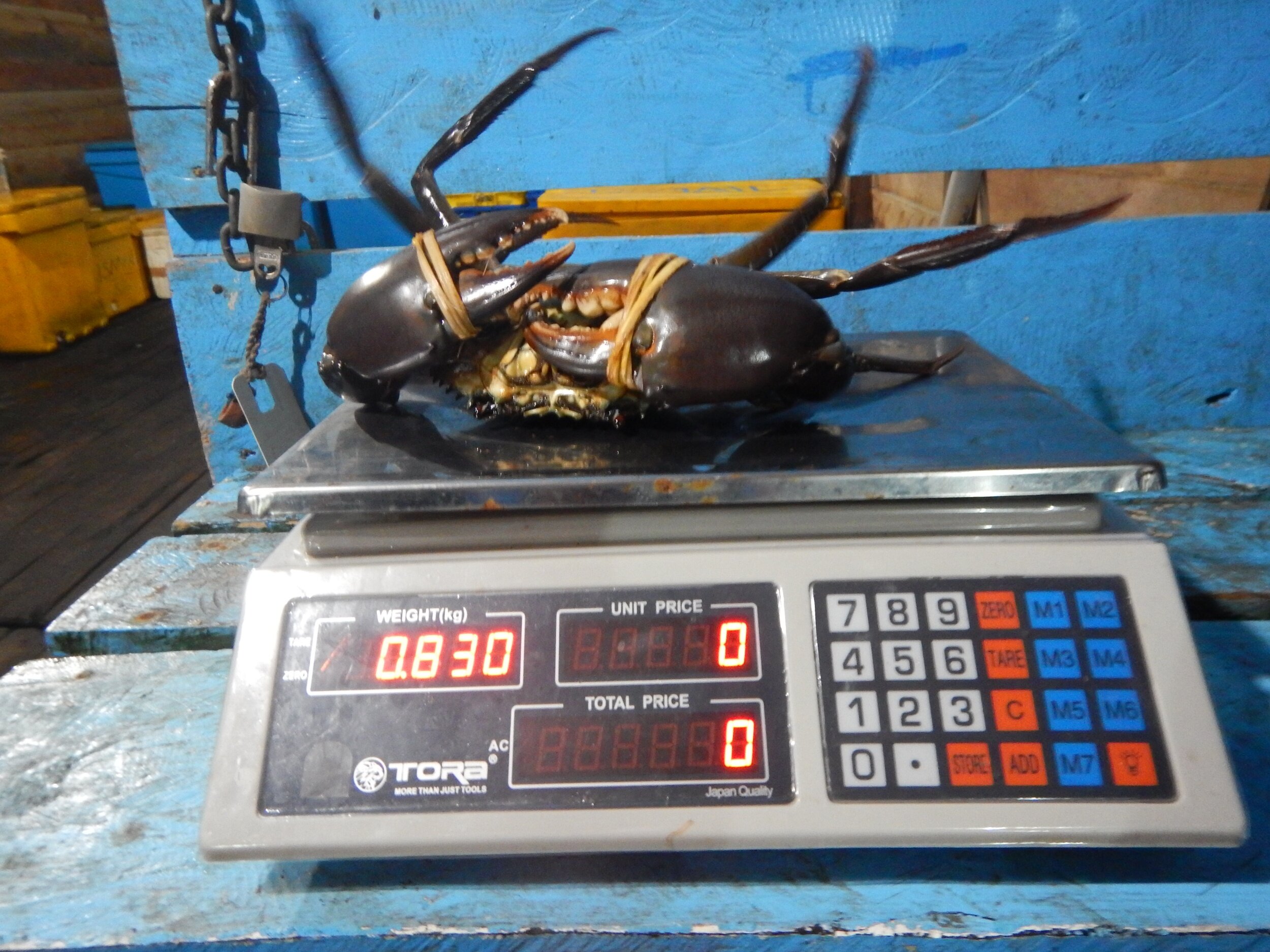Community-led fisheries management: Reflecting on our recent temporary fishing reserve
Just as the year 2021 got started, the 6th temporary fishing reserve - impacting six villages located within Kubu Raya, came to a close. This three month closure which started in October, ended on January 14th with the removal of closure informational signage and a spark of celebrations with food and prayer guided by village leaders. This closure encompassed a total of 22 rivers that connect the villages of Sungai Nibung, Serut Dua, Mengkalang and Mengkalang Jambu Village.
Holding temporary fishing closures is an important tool in the conservation and maximization of yield of aquatic food items, such as mud crabs. This species is a popular source of protein along the coast and is consumed by humans and wildlife alike. Temporarily closing fishing for this species allows it adequate time to spawn and grow as mud crabs are notoriously fast growers and eager reporoducers. By simply reducing fishing pressure on local populations for a short period of time, communities will enjoy larger harvest rates and crab sizes once the periodic reserve opens up again. While these rivers are closed, communities will shift fishing intensity onto open rivers as well as participate in alternative livelihoods supported through local Conservation Cooperatives.
Upon lifting the temporary reserve, our dedicated team of researchers conducted a simple experiment to compare the harvest rates of mud crabs between these temporarily closed rivers and open rivers. They collected data by setting traps in both study areas and counting and weighing the crabs caught for comparison.
We found that, within these temporary fishing closure sites, mud crab harvest rates increased by 29% catch per unit effort for each trap as compared to just a 2% increase in catch per unit effort for each trap in fishing areas that had remained open. This is a significant number because it immediately translates to a 30% increase in income for the month for hundreds of individual coastal families, allowing them to acquire greater food and income security.
By using this method, all the villages we partner with have experienced an average of 50% increased yield in mud crab fisheries over the course of this program and have enjoyed a significant improvement in economic resilience.
In total, we help facilitate closures in 6 villages helping conserve over 9,000 hectares of mangrove habitat. Our model helps integrate community-based services into natural resource management for short term benefits and long term conservation outcomes.

